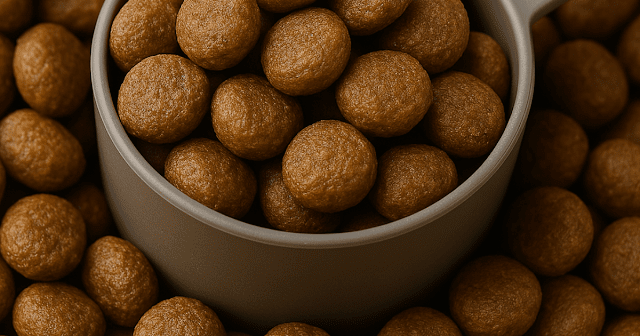The Benefits of Mixed Feeding: Combining Wet and Dry Dog Food for Optimal Health
Introduction: Beyond the Bowl – Why Mixed Feeding Might Be Your Dog's Best Diet
For many dog owners, the choice between dry kibble and wet food seems like an either/or decision. However, a growing number of veterinarians and pet nutritionists are advocating for a "mixed feeding" approach – combining both wet and dry dog food in your dog's diet. This strategy aims to harness the unique benefits of each type of food, potentially offering a more complete, palatable, and hydrating meal experience for your canine companion.
This guide will delve into the advantages of mixed feeding, explore how to implement it safely and effectively, and help you determine if this versatile dietary approach is the right choice for your dog's optimal health and happiness.
Section 1: Understanding Dry Kibble: The Foundation
Dry kibble forms the backbone of many dogs' diets due to its convenience and nutritional completeness.
- Convenience: Easy to store, measure, and serve. Less messy than wet food.
- Dental Health: The abrasive texture of kibble can help reduce plaque and tartar buildup on teeth (though not a substitute for brushing).
- Cost-Effectiveness: Generally more affordable than wet food, especially for larger dogs.
- Nutritional Density: High in calories and nutrients per serving, making it efficient.
 |
| The convenience of dry dog food. |
Section 2: Understanding Wet Food: The Hydration and Palatability Boost
Wet dog food, often found in cans or pouches, offers distinct advantages that complement kibble.
- Hydration: Wet food typically contains 70-80% moisture, significantly contributing to your dog's daily water intake. This is crucial for kidney health and overall hydration, especially for dogs who don't drink enough water.
- Palatability: Its rich aroma and softer texture are highly appealing to picky eaters, senior dogs with dental issues, or dogs recovering from illness.
- Portion Control: The higher moisture content means fewer calories per serving, which can be beneficial for weight management when used correctly.
- Variety: Wet food often comes in a wider range of flavors and textures, adding excitement to mealtime.
 |
| The appeal of wet dog food. |
Section 3: The Synergy of Mixed Feeding: Why Combine Them?
Combining wet and dry food allows your dog to benefit from the best of both worlds.
- Enhanced Palatability: The aroma and texture of wet food can make dry kibble more appealing, encouraging picky eaters to finish their meals.
- Improved Hydration: The added moisture from wet food helps ensure your dog stays well-hydrated, supporting kidney function and overall health.
- Nutritional Variety: Different formulations of wet and dry food can offer a broader spectrum of nutrients, potentially filling any minor gaps.
- Weight Management: By replacing a portion of high-calorie kibble with lower-calorie wet food, you can help your dog feel fuller with fewer calories, aiding in weight control.
- Dental Health (with caution): While wet food doesn't clean teeth, the kibble component still offers some abrasive action.
- Cost-Effectiveness: Mixed feeding can be a more affordable way to incorporate the benefits of wet food without committing to an all-wet diet.
 |
| The benefits of combining wet and dry dog food. |
Section 4: How to Implement Mixed Feeding Safely and Effectively
Proper implementation is key to avoiding digestive upset and ensuring balanced nutrition.
- Consult Your Vet: Always discuss any dietary changes with your veterinarian, especially if your dog has health conditions.
- Gradual Transition: Introduce mixed feeding slowly over 7-10 days, gradually increasing the proportion of the new food type.
- Maintain Balance: Ensure the combined diet still meets your dog's complete nutritional needs. Read labels carefully.
- Portion Control: Calculate the total daily caloric intake from both foods to prevent overfeeding. Many brands provide feeding guidelines for mixed diets.
- Serving Methods:
- Mix wet and dry food in the same bowl.
- Serve wet and dry food in separate bowls at the same meal.
- Serve wet food for one meal and dry food for another.
- Hygiene: Wet food can spoil quickly. Don't leave it out for extended periods. Clean bowls thoroughly after each meal.
Section 5: Is Mixed Feeding Right for Your Dog?
Mixed feeding can be beneficial for many dogs, but consider these factors:
- Picky Eaters: The added palatability of wet food can encourage them to eat.
- Dogs Needing More Hydration: Excellent for dogs prone to urinary issues or those who don't drink enough water.
- Weight Management: Can help dogs feel fuller on fewer calories.
- Senior Dogs: Softer texture is easier on aging teeth and gums.
- Dogs with Specific Health Needs: Always consult your vet for tailored advice.
Conclusion: A Balanced Approach to Canine Nutrition
Mixed feeding offers a flexible and beneficial approach to canine nutrition, allowing you to leverage the strengths of both wet and dry dog food. By providing enhanced hydration, improved palatability, and a broader nutritional profile, you can contribute significantly to your dog's overall health and well-being.
Remember to transition gradually, practice proper portion control, and always consult your veterinarian to ensure the mixed diet is perfectly suited to your dog's individual needs. A well-fed dog is a happy dog, and mixed feeding might just be the key to unlocking their optimal health.
For a complete overview of all aspects of canine nutrition, explore our comprehensive guide: The Comprehensive Guide to Dog Nutrition
